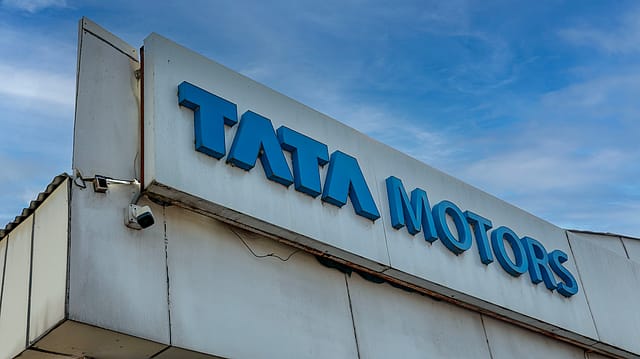CNG car market to grow faster than EVs: Tata Motors
ADVERTISEMENT

Tata Motors expects sales of compressed natural gas (CNG)-fitted petrol cars in the domestic market to outgrow that of electric vehicles.
"I would expect CNG to increase faster than EVs given the number of product launches that we are having. At the same time, we have the Currv EV launching this year. The growth of EVs will also be pretty strong," says PB Balaji, Group CFO of Tata Motors.
Tata Motors is expecting a moderate single-digit expansion of the EV market in 2024-25. "We are clear the phase of early majority wanting to come in in an enthusiastic mode is already getting over," says Balaji.
"We will have to wait for the second half when the festive season comes in, the election season is over, the Budget is out and the monsoon is over. The second half is likely to be a far more buoyant phase compared to the first half," Balaji explains.
Tata Motors sold 6,364 EVs in the domestic market last month, a 2% decline over April 2023. It, however, remains India’s largest electric carmaker with 73% market share. Out of eight EV models priced under ₹20 lakh, four belong to Tata Motors—hatchback Tiago EV, entry-sedan Tigor EV, compact SUV Nexon EV and the Punch EV.
January 2026
Netflix, which has been in India for a decade, has successfully struck a balance between high-class premium content and pricing that attracts a range of customers. Find out how the U.S. streaming giant evolved in India, plus an exclusive interview with CEO Ted Sarandos. Also read about the Best Investments for 2026, and how rising growth and easing inflation will come in handy for finance minister Nirmala Sitharaman as she prepares Budget 2026.
Tata Motors plans to launch two more electric cars this year—Curvv and Harrier EV. The carmaker expects to sell over 1 lakh EVs this fiscal.
A majority of prospective EV buyers will require much more re-assuring in terms of charging infrastructure, total cost of ownership (TCO) economics, residual value, variety, choice of models and various use cases, according to Balaji.
"Our entire focus this year is to work on the market development front on stepping up the EV penetration. It will also give us excellent returns as we start solving those barriers. That is the reason we are tying up with various charge point operators and setting up 22,000 chargers in the coming years, working with rooftop solar companies," Balaji says.
Tata Motors EV penetration stood at 13% in FY24 while for CNG it was 16%. Balaji expects penetration of both CNG and EVs to increase in the automaker's overall portfolio. “They feed off the ICE portfolio and not much each other,” he says.
The carmaker says it is committed to the electrification journey by helping the country migrate to a sustainable future. “It is natural for any market as it is developing to reach a particular point, hold stability a bit, then you work on what’s stopping the adoption, clear the pathways and then start accelerating. We do not see a concern from that perspective at all,” says Balaji.
Tata Motors is also weighing the import of luxury Jaguar and Land Rover (JLR) EVs under the Centre's new EV import policy. “We are excited by the opportunities in the EV space. All options are on the table,” says Balaji. "The work is underway at the new site that we have identified and we will share the plans at an appropriate time," he adds.
The Indian government recently unveiled a new EV import policy that slashes import duty to 15% from 100% for EVs costing $35,000 and above. Under the new policy, automakers are required to make a minimum investment of ₹4,150 crore or $500 million. The government has given a three-year timeline to automakers for setting up new manufacturing facilities in India and reaching 50% domestic value addition (DVA) within 5 years at the maximum. A localisation level of 25% is to be achieved by the third year.
